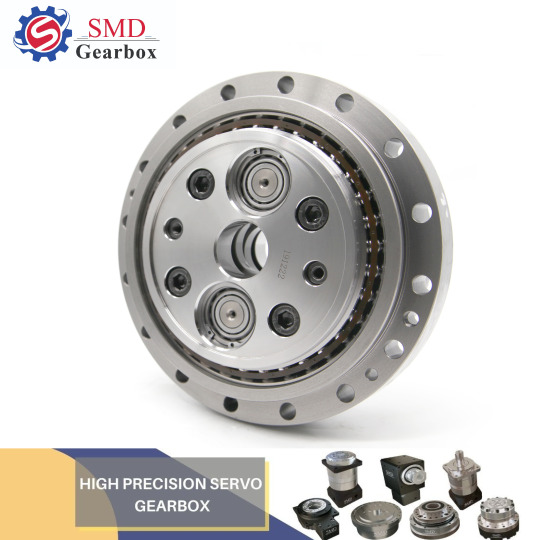#cycloid
Explore tagged Tumblr posts
Text

Third Euramerica submission
Wizards, crushers, submarines and pancakes
#paleoart#speculative biology#speculative evolution#spec evo#lmao#art#paleontology#original species#pancake#crab#cycloid#crustaceans#orthoceras#nautiloid#cephalopod#fadenia#eugeneodont#holocephala#helicoprion#palaeonisciformes#thylacocephala#sea#ocean#Euramerica#world building#fish#shark#wizard
16 notes
·
View notes
Text
Damn Julie really roasted him
11 notes
·
View notes
Text
youtube
Bonsystems’ electric actuator features an innovative design that combines a cycloidal reducer within a hollow motor structure, delivering powerful output and exceptional durability even with its slim profile.
This robot actuator, based on cycloidal drive technology, ensures stable operation through its dual-end structure optimized for maximum energy efficiency. Additionally, specifications such as reducer ratios, output torque, and size can be customized according to customer requirements, offering the flexibility to enhance and optimize the performance of various robots.
Developed with Bonsystems’ unparalleled technological expertise, this electric actuator sets a new standard that transcends simple components, driving innovation across the automation and robotics industries.
Discover Bonsystems’ cycloidal actuator technology, applicable to a wide range of robotic drive systems, including AGVs, quadruped robots, and humanoids, today.
#electricactuator#robots#cycloid#robotics#actuators#technology#Electric actuator#robot drive system#Cycloidal drive#Cycloidal Actuator#Robot Actuator#Youtube
0 notes
Text
Pyrus Core Cycloid | Armored Alliance


1 note
·
View note
Text
Cycloidal Gearbox Manufacturer in India | SMD Gearbox
A SMD Cycloidal gearbox is a type of speed reducer that operates using cycloidal motion. It consists of several components, including an eccentric input shaft, a cycloidal disk (also known as a cam), needle bearings, and an output shaft. The design of the cycloidal gearbox allows for high torque transmission, smooth operation, and compact size, making it suitable for various industrial applications.
To know more about product please visit https://www.smdgearbox.com/cycloidal-gearbox or you can write us at [email protected] to connect our technocrat team.
#Cycloidalgearreducer #SmallCycloidalgearbox, #Cycloidaldrive, #Cycloidalgearreduction, #Cycloidalgearboxforsale, #Cycloidalpingearspeedreducer #smdgearbox
#gearboxmanufacturer #servogearbox

#cycloid#smdgearbox#gearboxmanufacturer#smd#servogearbox#Cycloidalgearreducer#SmallCycloidalgearbox#Cycloidaldrive#Cycloidalgearreduction#Cycloidalgearboxforsale#Cycloidalpingearspeedreducer
0 notes
Text
youtube
Cycloid (2013) [3 min] by Tomoki Kurogi | Japan
#2D#2D Animation#2013#3 min#Tomoki Kurogi#Japan#Animated Short#AnimatedShortOfTheDay#Animation#Cycle#Cycloid#Youtube
0 notes
Note
:0 whats the cycloid serum?
When sanitization was being developed, it was a prototype process that would give ink-folk water-resistant skin, when sanitization failed, they used the same process and modified it until it became a fully fledged (and functional) way to transform inklings/octoling’s flesh into scales. It became known as the cycloid serum.
Sanitization functions essentially the same in canon, as in my au, except the colors are a tad off.

#homerun au#asks#(cycloid is the type of scales that#salmon type fish have)#but truthfully I don’t think salmonids are all one species but#I may go into that in depth later#my art
184 notes
·
View notes
Text

huh
#i've had the wikipedia page for “fins” open all morning#much to think about. much to learn#marine biologists please talk to me i just wanna discuss the evolutionary implications of cycloid vs ctenoid scaling#whaling au#some sketches
36 notes
·
View notes
Text

Old Lace, 2015
23 notes
·
View notes
Text

Cycloidal Gearbox at Best price in India
Looking for Cycloidal Gearbox at the best price in India? Univario offers high-quality, durable cycloidal gearboxes designed for efficiency and reliability. Explore our range at affordable prices and enjoy excellent performance. Visit Univario today for your perfect gearbox solution.
#speed variator gearbox supplier in india#wpa worm gearbox supplier in india#worm reduction gearbox suppliers near me#nmrv worm gearbox suppliers in new delhi#aluminium worm gearbox suppliers in india#wpx worm gearbox supplier in india#premium worm gearbox suppliers in india#wpo worm gearbox supplier in india#Cycloidal Gearbox at best price in India
0 notes
Text

There are four types of fish scales!
Cycloid scales are thin, overlap, and flexible. They're found on primitive teleosts (like minnows and carp).
Ctenoid scales have small, backwards pointed scales (known as cterns) make the fish more hydrodynamic and faster. They're found on Advanced Ctenoids (like perch and sunfish).
Ganoid scales are thick, diamond-shaped, and mostly non-overlapping. They're found on Chondrostei (like sturgeons and paddlefish).
Placoid scales are spikey and tooth-like with nerves. These are found on Chondrichthyes (like sharks and rays).
Ichthyology Notes 3/?
#science#biology#animals#ocean#wildlife#marine ecology#animal facts#marine life#fun facts#marine biology#fish#fish facts#fins#fish fins#scales#fish scales#ichthyology#fish anatomy#anatomy#minnows#carp#perch#sunfish#sturgeons#paddle fish#sturgeon#paddlefish#shark#sharks#rays
19K notes
·
View notes
Text
Science Park Model Cycloidal Path Manufacturer In India - Parthfibrotech
Science Park Model Cycloidal Path Manufacturer In India. Variety Of Science Park Equipments Like Double Sided Cone, Educational Park Swing, Marking, Mobious Bond With A Skilled Team Of Professionals Supports In The Production Process Of The Various Products Manufactured By Parth Fibrotech, Leading Indoor & Outdoor Gym Equipments Manufacturer, Supplier and Exporter In India
0 notes
Text
Cycloidal Gearboxes: The Future of Efficient Power Transmission with TopGear Transmission
In the world of industrial machinery, efficiency and durability are paramount. Cycloidal gearboxes, with their unique design and unparalleled performance, are becoming the go-to solution for various heavy-duty applications. TopGear Transmission, a leader in precision engineering, offers advanced cycloidal gearboxes that bring innovation and reliability to the forefront of power transmission technology.
What is a Cycloidal Gearbox?
A cycloidal gearbox is a type of speed reducer that uses a unique mechanism to deliver high torque, smooth operation, and compact design. Unlike traditional gear systems that rely on gear teeth meshing, cycloidal gearboxes use a combination of rolling elements and pins, allowing for more efficient load distribution and reduced wear and tear. This distinctive design also makes cycloidal gearboxes highly durable and capable of withstanding shock loads and heavy-duty operations.
Key Benefits of Cycloidal Gearboxes
High Torque & EfficiencyOne of the standout features of cycloidal gearboxes is their ability to deliver high torque even at low speeds. This makes them ideal for applications requiring precision and power. With minimal energy loss and high mechanical efficiency, they significantly enhance overall machine performance.
Compact & Lightweight DesignDespite their high load-bearing capacity, cycloidal gearboxes are remarkably compact. Their design allows for a smaller footprint, saving valuable space in machinery setups. This compact nature makes them ideal for industries where space and weight constraints are critical.
Durability & Long LifeCycloidal gearboxes are designed to handle shock loads and vibrations better than traditional gear systems. Their rolling mechanism minimizes friction and wear, ensuring a longer operational life with minimal maintenance.
Smooth and Quiet OperationThanks to their unique rolling action, cycloidal gearboxes operate smoothly and quietly, reducing operational noise and ensuring more reliable machine performance.
Applications of Cycloidal Gearboxes
TopGear Transmission���s cycloidal gearboxes are highly versatile and can be used across a wide range of industries:
Robotics: The high precision and smooth operation of cycloidal gearboxes make them ideal for robotic arms and automation systems where accuracy and control are essential.
Material Handling: Their high torque capabilities are perfect for heavy lifting and conveying equipment.
Wind Turbines: Cycloidal gearboxes are often used in renewable energy applications like wind turbines due to their durability and high torque efficiency.
Machine Tools: For applications where precision and load stability are required, cycloidal gearboxes ensure smooth power transmission.
Why Choose TopGear Transmission for Cycloidal Gearboxes?
At TopGear Transmission, we pride ourselves on delivering high-quality, reliable, and efficient gear solutions. Our cycloidal gearboxes are designed to meet the highest industry standards, ensuring optimal performance even in the most demanding environments. With advanced engineering and precision manufacturing, we provide customizable solutions tailored to your specific needs.
Conclusion
Cycloidal gearboxes represent a new era of power transmission, offering enhanced performance, durability, and efficiency across various industries. TopGear Transmission is at the forefront of this technology, delivering cutting-edge cycloidal gearboxes that meet the evolving demands of modern machinery. Whether you're in robotics, material handling, or renewable energy, our cycloidal gearboxes are designed to provide reliable, high-performance solutions that stand the test of time.
Visit us https://topgeartransmission.com/products/cyclodial-gearbox/
0 notes
Text
Motion Control Systems | SMD Gearbox

Innovation and precision are the driving forces of progress. At the heart of this automation revolution, you'll find a “Servo Gearboxes” leading the way into the future.
The automation will continue to transform industries, making processes more efficient, safer, and environmentally friendly. SMD gearbox will be at the forefront of this transformation, ensuring that precision remains the cornerstone of automation.
Please visit our website to know more about us at www.smdgearbox.com or you can contact us on following details:
📞📲 +91 7030669818
#smdgearbox#harmonicgearbox#planetaryreducer#manufacturing#gearboxmanufacturerinindia#cycloidal#motioncontrolsystems
0 notes
Text
Industrial Planetary Gearbox distributor | Dynapar
Dynamic Products is one of the leading supplier and dealer of a industrial Planetary gearboxes. Planetary gearboxes are a reliable, efficient, and high-precision solution for various industrial applications. They offer improved performance, low noise and vibration, and high efficiency compared to traditional gear systems. With their compact design, high torque output, and precise power transmission, they are ideal for use in robotics, aerospace, automotive, and medical device industries.
#Industrial Planetary Gearbox distributor#industrial gearbox suppliers#Bevel Planetary Gearbox dealer#Cyclo Planetary Gearbox dealer#Cycloidal Gearbox supplier#Bevel Helical Gearbox supplier#Shaft Mounted Gearbox dealer
0 notes
Text
https://www.marketwatch.com/press-release/cycloidal-gearing-market-size-share-2022-growth-trends-covid-19-impact-analysis-and-forecasts-to-2030-2022-12-07
0 notes